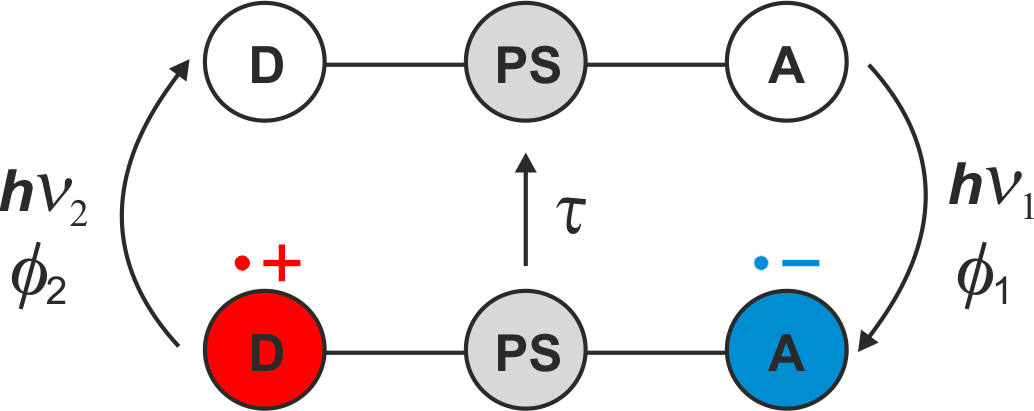Quantitative insights into charge-separated states relevant for artificial photosynthesis
Efficient multi-electron transfer reactions in photosynthesis rely on charge-separated states as key intermediates.[1] Despite the importance of charge-separated states, the factors that govern their formation efficiencies are still poorly understood.[2] Moreover, the desired charge accumulations compete with light-induced electron-hole recombinations as main deactivation pathways, which are largely unexplored.[3] Our study presents a systematic investigation[4] of two donor-photosensitizer-acceptor triads[5] capable of storing as much as 2.0 eV in their charge-separated states. Different donor-acceptor distances in the triads enabled us to include distance-dependence investigations. Using quantitative one-pulse laser flash photolysis, we provide deep insights into the charge-separated state formation quantum yields, which can reach up to 80%. Furthermore, the fate of the charge-separated state upon further (secondary) excitation with green photons is elucidated by additional two-pulse laser flash photolysis experiments[6]. One key finding of our study is that thermal and light-induced charge recombinations (Figure 1) show opposite behaviors in terms of their distance dependences.

Figure 1: Schematic representation of the mechanism for light-induced (hν1) formation of a charge-separated state in a molecular electron donor-photosensitizer-electron acceptor triad together with thermal (τ) and light-induced (hν2) charge recombination.
[1] Leif Hammarström, Acc. Chem. Res., 2015, 48, 840–850.
[2] Tomohiro Higashino, Tomoki Yamada, Masanori Yamamoto, Akihiro Furube, Nickolai V. Tkachenko, Taku Miura, Yasuhiro Kobori, Ryota Jono, Koichi Yamashita, Hiroshi Imahori, Angew. Chem. Int. Ed., 2016, 55, 629–633.
[3] Andrea Pannwitz, Oliver S. Wenger, Chem. Commun., 2019, 55, 4004–4014.
[4] Svenja Neumann, Christoph Kerzig, Oliver S. Wenger, Chem. Sci., 2019, DOI: 10.1039/c9sc01381d.
[5] Svenja Neumann, Oliver S. Wenger, Inorg. Chem., 2019, 58, 855–860.
[6] Christoph Kerzig, Xingwei Guo, Oliver S. Wenger, J. Am. Chem. Soc., 2019, 141, 2122–2127.